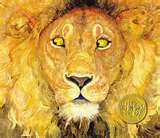 If we’re trying to help our kids learn to read, why read wordless picture books? Isn’t reading all about letters and words?
If we’re trying to help our kids learn to read, why read wordless picture books? Isn’t reading all about letters and words?
Yes and no.
Reading is: to inspect and apprehend the meaning of writing or other signs or characters. (Thanks, dictionary.com based on the Random House dictionary!) So, reading a book means gaining meaning from the words and from the pictures. Here are some key reading skills kids build when they read wordless books:
- Comprehension as they follow the story shown in the pictures
- Print concepts (we read top to bottom, left to right)
- Sequencing
- Inferring
- Predicting
- Vocabulary
How can a wordless book build a child’s vocabulary? Research led by professors Sandra Gilliam, Ph. D. and Lisa Boyce, Ph. D. from the Emma Eccles Jones College of Education and Human Services at Utah State University showed that mothers used more complex language when sharing a wordless book with their children than they did when they made comments while reading a book with words. (Utah State University Study Shows Parents Are More Engaged With Their Children When Reading Books Without Text June 07, 2011, www.Businesswire.com retrieved June 15, 2012)
And of course, the most important reason to share wordless books is because these books draw kids into a world where even those who struggle with letter recognition can successfully read a fantastic story.
The Lion and the Mouse by Jerry Pinkney is a gorgeous “retelling” one of Aesop’s fables. It won the Caldecott medal, with good reason. Young ones will enjoy the art, and older ones can discuss the deeper layers of the fable.
Before reading The Lion and the Mouse, talk about reading a book with no words. We readers have to really examine the art to understand what is going on. Share this book and let your students either turn to a partner to share or tell the whole group what is happening in the story. Ask students to predict what will happen when they see the hunters setting up the trap and then the lion’s foot stepping on a rope. Use rich vocabulary yourself as you add to the conversation about the plot and what will happen next.
As a writing activity, students can write the dialogue between the lion and the mouse on sticky notes and put them on appropriate pages to read aloud to a friend. It’s perfect for retelling if you make a storybox with a stuffed lion and mouse, and a length of string. No matter what the reading level of your students, all of them will enjoy successfully reading The Lion and the Mouse.







